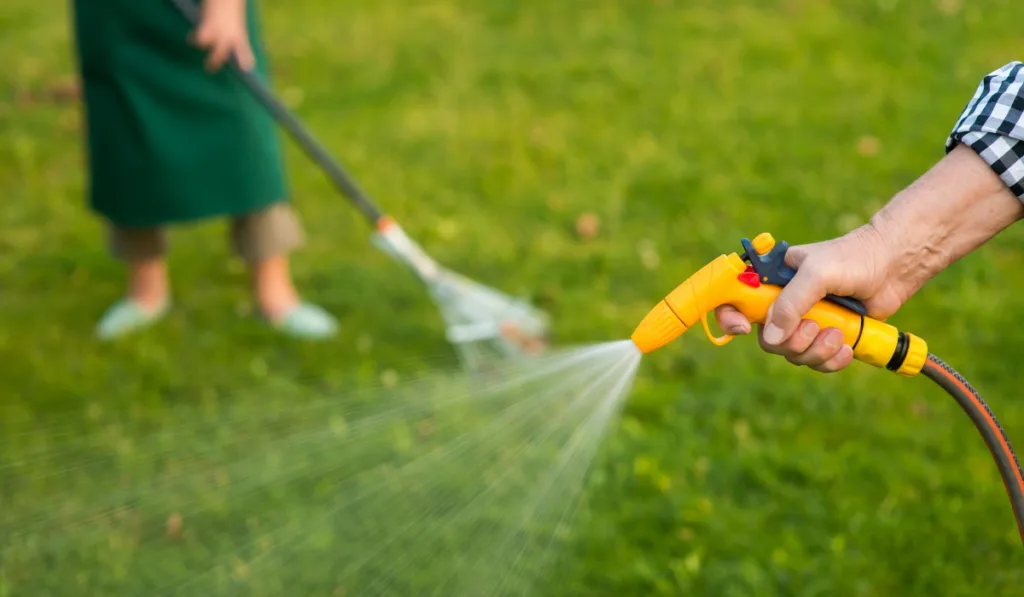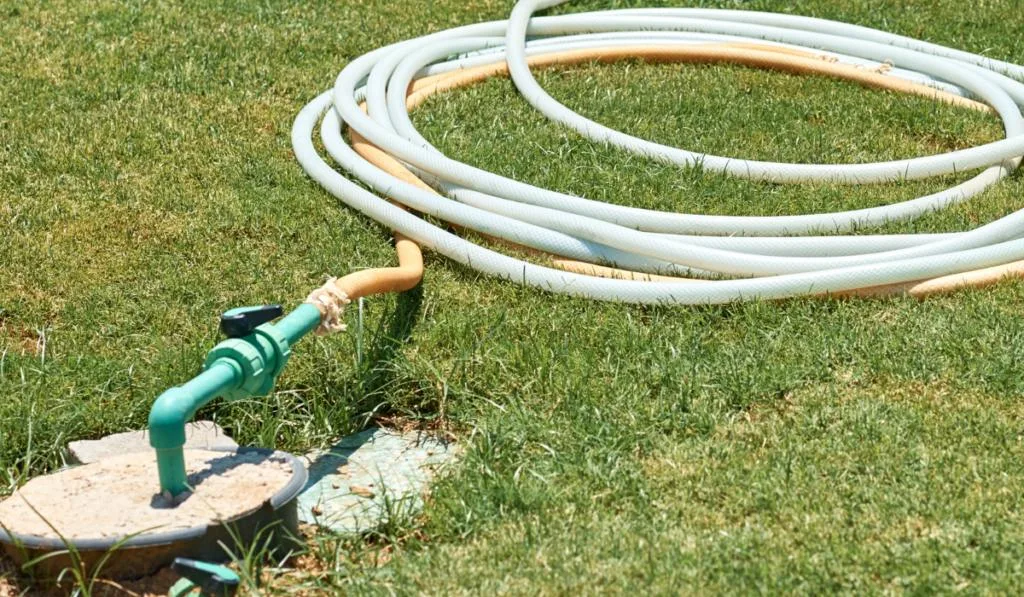Watering your lawn and the plants around your house is painstaking when using a hose with low water pressure. Working around a big garden in your yard can significantly increase the time it takes to get all your plants the water they need.
In addition, low pressure makes it harder to gauge whether you’ve given your plants and flowers enough, which could lead to problems down the road.
The sooner you solve your hose water pressure issues, the better. Doing things like buying specific hose nozzles, turning off other hoses, and buying new hoses can help. However, there may also be issues with your plumbing that need the attention of a professional plumber.
We’ve put together some easy ways to increase pressure in your garden hose to save you time and spare you the frustration of low pressure. Hopefully, these tips will help you diagnose your water pressure issues and reach a workable solution faster.
Here are seven ways to increase the pressure in your hose starting today.

Table of Contents
Covering Part of the Nozzle
Using your thumb to cover part of the end of the hose is the oldest trick in the book. It makes basic sense; when you shrink the opening of the hose, the water comes out with more force.
People have been using the thumb trick for centuries to water grass, spray down the kids, or spray the mud off the bottom of shoes.
If you’re working with a low-pressure hose, covering part of the opening will enable you to do less walking around as you water. Instead, you can stand where you are and make your water reach farther distances.
Buy a New Hose
Sometimes buying a new hose is the best way to solve pressure issues. Old hoses that bake in the sun for years stiffen and make any kinks and bends harder to get out. Less water can get through when your hose has a kink in it. When the water reaches your hands, it can slow to a trickle.
Retrace your steps and smooth out any kinks in your hose. You may need a new hose if they immediately revert to their kinked position. Thankfully, basic garden hoses are affordable and readily available.

Get a Hose with a Smaller Diameter
If you buy a new hose, you should consider buying one with a smaller diameter. Smaller hoses mean the water has to move through with more force.
Or you can buy an expandable gardening hose that grows as the water moves through it. The walls of the hose put force on the water and move it faster through the hose to increase the pressure when you water your plants or grass.
Hoses come in several sizes. If you’re struggling with low water pressure, buy something with a smaller diameter and see if it makes things better.
Water Boosters – Do They Work?
Some people will tell you to buy a water pressure booster to solve your problem. The reviews, however, are mixed. For about $100, you can buy a booster that will plug into a wall outlet. It has places you can attach your hose with a small tank that adds power to your water pressure.
Look online for products with many positive reviews if you want to give one a try. It could be a simple yet effective way to increase water pressure with a bit of juice.
Also, they’re easy to install without the help of a plumber. However, if you need help, plenty of plumbers in your area are happy to lend a hand.

Buy a High-Powered Hose Nozzle
One of the easiest things you can do to increase pressure in your garden hose is to buy the right nozzle. Instead of buying a completely new hose, you can shrink the diameter as the water comes out of a narrow nozzle.
Many of these high-powered nozzles have adjustable spray modes. You can shoot a single stream of water greater distances or use several smaller streams to get the same effect as a sprinkler for your plants and garden.
Turn Off Other Water Faucets
You may experience a decrease in water pressure if you’re watering your garden with the hose while everyone else in your house is using water.
For example, if you’ve got multiple showers running while someone is in the kitchen doing the dishes, you’ll likely see a marked decrease in outdoor water pressure.
Wait until early in the morning to water your garden with your hose to reduce the chances of other people using a lot of water at the same time.
In addition, this can help increase the pressure coming through the hose rather than diverting water to several outlets.

Check Your Main Water Valve
Your problems with water pressure could come from the main water hookup. For instance, a leak in your main hookup or the pipe leading from the public hookup to your house could cause your water pressure to drop significantly.
A lot of leaks develop slowly, making it challenging to notice drops in water pressure. If things only worsen gradually every day, your pressure may seem normal. However, check the main hookup for any potential issues if you notice constant lower water pressure.
Speaking of leaks, you should also check your hose for leaks that can negatively impact water pressure. If a garden hose springs a leak, it will affect how much water is delivered to your plants and garden.
Sometimes it’s hard to recognize leaks in your hose when it’s snaking through your grass. A dog or a sharp stone can puncture a hose easily.
Dealing with water pressure issues can be frustrating. Hopefully, these tips will help you get the pressure you need to water quickly and keep your plants in good health.
Do your best to diagnose issues quickly and use some of these methods to juice your hose and make your gardening tasks more manageable.
